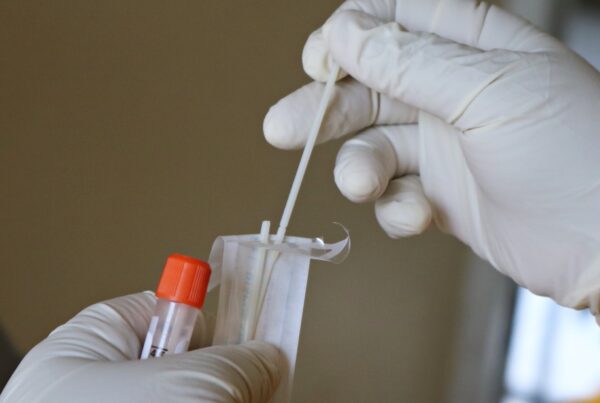The Big Picture
An update on the number of cases and deaths from the coronavirus: As of Sunday, January 10, the United States has over 22.1 million coronavirus cases and over 371,000 deaths. North Dakota, South Dakota, and Utah have the highest case rates (cases per 100,000 people). Cases are still rising, but the vaccine rollout has been slower than expected. After promising to vaccinate 20 million Americans by the end of 2020, only 5.9 million had been vaccinated by Thursday. Dr. Fauci explains that vaccination rates should increase in the coming weeks, and he urges everyone to trust the rollout process. “We just started,” he states. However, confusion and long wait times characterize the current distribution process.
Rethinking the PPE Supply Chain
It has been made clear that weaknesses in the supply chain are causing widespread shortages of personal protective equipment (PPE). Although supply chains have not been able to make many changes to their processes, data from Get Us PPE shows that the need is only growing. In November, 66% of PPE requesters had no PPE supply remaining. Bill Kopitke, head of healthcare at Amazon Business and contributor at Supply Chain Brain lays out three distinct steps that could help supply chains “streamline the supply chain for organizations that urgently need essential supply.”
- Consider Alternative Sources
Many business-to-business (B2B) suppliers rely on large bulk orders to maintain steady business. As a result, large hospitals with the capacity and funding to order in bulk have been prioritized, and small, non-hospital facilities are left with little access to PPE. Furthermore, the intensive vetting processes in place make it difficult to connect manufacturers to suppliers. This means that many manufacturers may have surpluses of PPE with nowhere to send them. Rethinking the PPE supply chain using online B2B supplier models means manufacturers can get access to resources from different countries and states, and as explained by industry media outlet Supply Chain Brain, “give sellers and suppliers access to a broader network of partners, enabling them to fill significant increases in demand, without the need for existing relationships or time-consuming contracts.”
2. Partner with Existing Manufacturers
Many companies have been able to use existing partnerships with manufacturers to produce PPE. As seen among many industries, companies like Tesla have started creating ventilators and 3-D printing companies are producing face shields. Using the online selling method outlined above, PPE produced by these companies can be matched to facilities that need it the most.
3. Adopt New Technology
By shifting to e-commerce, companies can upgrade their technology to streamline selling processes. E-commerce provides companies with real-time analytics, and simplifies things like order tracking, management, and fulfillment. New technological developments allow suppliers to use e-commerce analytics to predict PPE demand, an extremely important feature that allows companies to plan for fluctuations in PPE orders and shipments. E-commerce can even improve user experience for the facility ordering PPE. “Simple, intuitive features allow buyers to make order updates and reschedule deliveries quickly and easily,” explained Supply Chain Brain.
This Week at Get Us PPE
Dr. Megan Ranney, co-founder of Get Us PPE, was highlighted in Providence Monthly. Described as a national hero and expert, Dr. Ranney talked about her current goals during the pandemic and her hopeful mindset for the future. As she fulfills many roles as a doctor, educator, and leader, Dr. Ranney explains how COVID-19 has consumed her day-to-day work. “My work on COVID has, in many ways, taken over my life. I became a frequent commentator on national and local media, translating the latest science into comprehensible guidance for the average American. We are going to continue to need strong science communication and clear guidance for policymakers,” she states. After this pandemic is behind us, Dr. Ranney hopes to turn her attention to other pressing health issues while still being a guiding voice in the medical field.
AJC discussed the grant program led by Get Us PPE and explored the work of Georgia Makes PPE, an inaugural grant recipient. Georgia Makes PPE has been able to deliver 10,000 isolation gowns, the first 200 of which were from the Get Us PPE maker grant. Through these maker grants, Get Us PPE is funding the mission of makers across the country to help deliver PPE to those who need it the most.
Success Story
During the holidays, Chesterbrook Woods held a holiday lights event that raised over $6,000, with a portion of the proceeds donated to Get Us PPE, in honor of all our frontline heroes. Carla Post, an event organizer, explained that the idea came from a place of both sadness and joy. “I started thinking about… how so many lives had been lost and how so many traditional holiday mainstays would not happen this year. I started wondering what we could do to come together as a community in joy and remembrance,” explained Post. After gaining widespread support from the community, Post and fellow organizers distributed bags of candles to over 260 homes. Distributing over 8,000 luminaria, they created a truly spectacular event for all to enjoy. While the holidays may be over now, it’s moments of generosity like this that remind us what the holiday season is all about.
Donate to Get Us PPE



